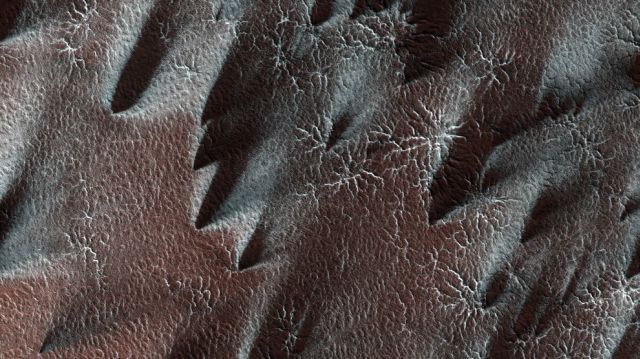|
|
Mars Surface
|
Both satellites were discovered in 1877 by Asaph Hall, and are named after the characters Phobos (panic/fear) and Deimos (terror/dread) who, in Greek mythology, accompanied their father Ares, god of war, into battle. Ares was known as Mars to the Romans.
From the surface of Mars, the motions of Phobos and Deimos appear very different from that of our own moon. Phobos rises in the west, sets in the east, and rises again in just 11 hours. Deimos, being only just outside synchronous orbit—where the orbital period would match the planet's period of rotation—rises as expected in the east but very slowly. Despite the 30 hour orbit of Deimos, it takes 2.7 days to set in the west as it slowly falls behind the rotation of Mars, then just as long again to rise.
Because the orbit of Phobos is below synchronous altitude, the tidal forces from the planet Mars are gradually lowering its orbit. In about 50 million years it will either crash into Mars’ surface or break up into a ring structure around the planet.
The origin of the two moons is not well understood. Their low albedo and carbonaceous chondrite composition have been regarded as similar to asteroids, supporting the capture theory. The unstable orbit of Phobos would seem to point towards a relatively recent capture. But both have circular orbits, very near the equator, which is very unusual for captured objects and the required capture dynamics are complex. Accretion early in the history of Mars is also plausible but would not account for a composition resembling asteroids rather than Mars itself, if that is confirmed.
|
|









